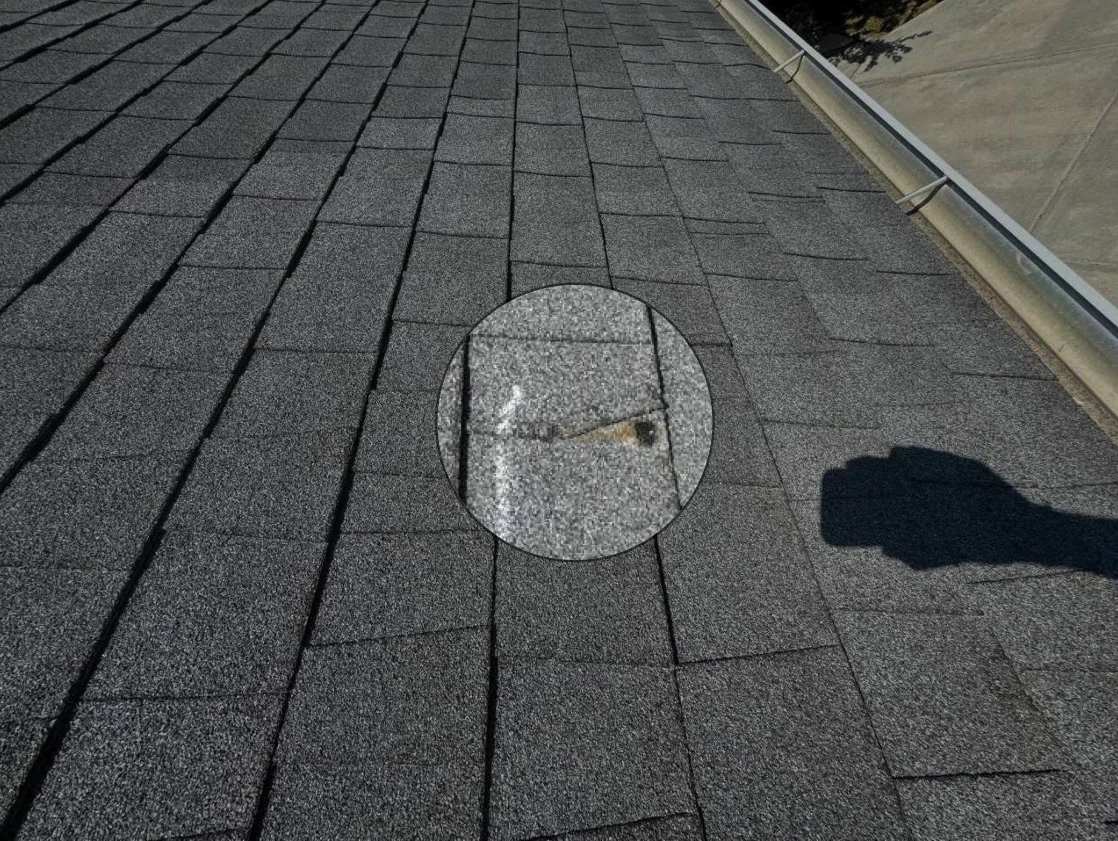When to consider roofing specialists for unusual damage? Your roof protects your home from the elements, but not all damage is easy to spot. While some issues, like leaks or missing shingles, are obvious signs you need help, other problems may fly under the radar. Unusual forms of roof damage, such as curling shingles, moss growth, or sagging decks, often go unnoticed until they worsen.
Knowing when to consider a roofing specialist can save you from bigger, costlier repairs down the road. Let’s explore the signs that indicate it’s time to bring in an expert to help you keep your roof in top shape year-round.
Signs Indicating the Need for a Roofing Specialist
Your roof is one of the most critical parts of your home, protecting it from the elements and maintaining the structure’s integrity. But how do you know when it’s time to call a roofing specialist? Identifying early signs can help prevent more extensive damage and costly repairs down the road.
Persistent Leaks and Water Damage
If you notice water spots on your ceilings or walls, it could be a sign of a leaky roof. A persistent leak is one of the clearest indications that you need a roofing specialist. Leaks can cause significant structural damage, leading to mold growth and weakening your home’s framework.
Sometimes, the source of the leak isn’t directly above the water spot you see. Water can travel along beams or walls, so identifying and fixing the issue promptly can save you from expensive repairs in the future.

Shingle Damage
Shingles are designed to protect your roof, but over time, they can become worn or damaged. If you notice shingles that are cracked, curled, or missing altogether, it’s time to take action. Shingle damage is one of the most common reasons for contacting a roofing professional. Not addressing this early could lead to more serious problems, such as wood rot or leaks.
For homeowners with wood shingle roofs, regular wood shingle roof maintenance is critical to avoid costly replacements. These roofs require extra care to preserve their natural beauty and functionality.
Sagging Roof
A sagging roof is a severe issue that demands immediate attention. This can indicate structural damage, possibly due to water infiltration or excess weight from snow and ice. If your roof is sagging, it may no longer be safe, and you should contact a specialist right away to assess the problem.
Increased Energy Bills
A less obvious sign that your roof may need attention is a sudden spike in your energy bills. Poor insulation caused by roof damage can lead to heat loss during the winter and higher cooling costs during the summer.
If your energy bills are consistently higher than usual, it could indicate an issue with your roof’s ventilation or insulation. A specialist can help identify and fix the problem, making your home more energy-efficient.
Visible Mold and Mildew
Mold and mildew inside your home can sometimes indicate a roofing issue. When water penetrates your roof, it can lead to the growth of these harmful substances. If you spot mold or mildew, especially in your attic, contact a roofing specialist to inspect for possible water damage.
Types of Unusual Roofing Damage
Roofs are built to withstand a lot, but unusual damage can sometimes occur due to unexpected events or environmental factors. Being able to identify these types of damage is crucial in maintaining the longevity of your roof.

Hail Damage
Hailstorms can cause significant damage to your roof, even if the hailstones are relatively small. Hail can leave dents in shingles, crack them, or cause them to loosen. After a severe hailstorm, it’s a good idea to inspect your roof or have a professional do it.
Hail damage can sometimes be difficult to see, but it can cause leaks and other long-term issues if not addressed.
Animal Infestation
Squirrels, birds, and other animals can cause damage to your roof if they find a way in. These pests may chew through shingles, damage insulation, and create nests that block proper ventilation. If you notice signs of animal activity on your roof or in your attic, it’s essential to address it immediately.
Wind Damage
High winds can lift and displace shingles, especially on older roofs or those that haven’t been properly maintained. Wind damage is a common cause of roof problems and can lead to missing shingles, damaged flashing, and other issues. After a storm with strong winds, check for any loose or missing shingles and schedule an inspection if needed.

Tree Branches
Falling tree branches are another source of unusual roof damage. Even small branches can scrape against shingles, causing granule loss or puncturing the roof. Larger branches, if they fall, can cause even more significant damage, such as breaking through the roof’s surface.
If you have trees close to your home, it’s essential to keep them trimmed and remove any dead branches that pose a risk.
Ice Dams
In colder climates, ice dams can form along the edges of your roof, preventing melting snow from draining properly. This trapped water can seep under your shingles and cause leaks. Ice dams are a unique problem that requires specific solutions, such as better insulation or installing ice and water shields.
Wood Shingle and Siding Maintenance
If your home has wood shingles or siding, you need to be particularly mindful of their care. Wood shingle roof maintenance is essential to prevent the wood from warping, cracking, or rotting over time. Regular inspections can help identify any issues early, allowing you to address them before they become significant problems.
Wood shingle siding also requires regular maintenance to keep it in good condition. Wood shingle siding maintenance includes cleaning, sealing, and repairing any damaged areas to ensure the wood remains durable and attractive. Keeping up with this maintenance not only extends the lifespan of the siding but also adds to the overall curb appeal of your home.
When to Seek Professional Help for Your Roof
Your roof plays a critical role in protecting your home, and knowing when to call a professional can save you from expensive repairs or even the need for a full roof replacement. Whether you’re dealing with typical wear and tear or unexpected damage, there are clear signs that indicate when you should seek expert help.
Visible Damage to Shingles or Roofing Materials
One of the most apparent signs that it’s time to call a roofing professional is visible damage to your shingles or roofing materials. If you notice cracked, curling, or missing shingles, it’s a clear indication that your roof may no longer be watertight. Ignoring this kind of damage can lead to leaks, wood rot, or even structural issues down the line.
For homeowners with wood shingles, wood shingle roof maintenance is particularly important to prevent further damage. Regular inspections and maintenance can help identify problem areas early before they turn into costly repairs.
Leaks or Water Stains Inside the Home
Water stains on your ceiling or walls are often a tell-tale sign of a roof leak. Even small leaks can cause significant damage to your home’s interior if not addressed quickly. If you notice any water spots, it’s crucial to contact a roofing specialist to investigate the cause.
Leaks can lead to mold, mildew, and other moisture-related problems that may affect your health and the structural integrity of your home. Don’t wait until the damage worsens—take action as soon as you see the signs.
Sagging Roof or Uneven Surface
A sagging roof or any noticeable dips in the roofline are major red flags that you need professional assistance. Sagging often points to underlying structural damage or excess weight from snow or water pooling. If left untreated, it could result in a partial roof collapse.
If you’re unsure whether your roof is sagging, take a look from the street or a distance where you can see the entire roofline. If it appears uneven, call a professional for an inspection as soon as possible.
Mold or Mildew Growth
If you notice mold or mildew growth, particularly in the attic or near the roofline, this could be a sign that your roof is allowing moisture to seep in. Mold not only damages your home but can also pose health risks to you and your family. It’s best to contact a professional immediately to assess and fix the problem before it spreads.
When It’s Time for a Specialist
While some roof maintenance can be handled with basic DIY methods, there are times when it’s essential to bring in an expert. If you’re dealing with persistent issues like leaks, visible damage, or structural problems, don’t hesitate to call a professional.
Seasonal Roof Maintenance: A Year-Round Checklist
Maintaining your roof year-round is key to preventing costly repairs and ensuring it stands up to the elements. In spring, clear debris and check for winter damage like cracked shingles or leaks.
Summer is the time to inspect for sun damage, while fall calls for gutter cleaning and checking for loose or missing shingles. Winter brings the need to monitor for ice dams and remove snow buildup to avoid roof strain. Regular maintenance helps catch issues early, keeping your roof in top shape and extending its lifespan, saving you from unexpected headaches down the road.


